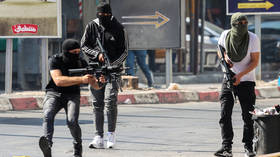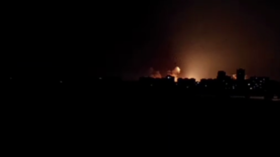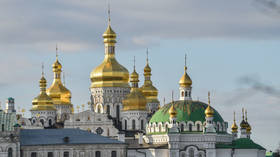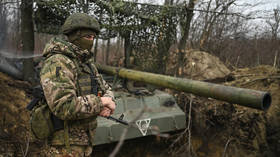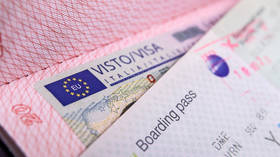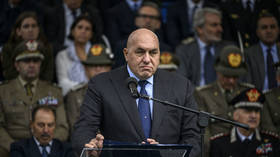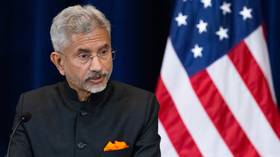Are Israel and Lebanon on the verge of another all-out war?
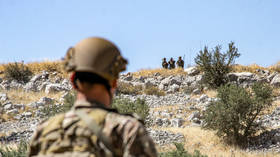
After months of tensions along the Blue Line separating Lebanon and Israel, tents set up by Lebanese Hezbollah – in response to an Israeli border war project on occupied territory – may escalate into the largest conflict between both sides since the 34-day war of 2006.
Lebanon and Israel are technically in a constant state of war, frozen since August 2006. Despite both sides having largely held their fire since the mid-2000s, a series of provocations has threatened to change the status quo in dramatic fashion. In 2018, Lebanon’s Higher Defence Council announced that it had given orders to prevent Israel from constructing a multi-million dollar border wall on Lebanese territory, to which Tel Aviv* responded that the fence/wall was intended to be built on Israeli territory.
In January 2019, after the Israeli military claimed it had discovered tunnel systems built beneath the border area with Lebanon, Beirut filed a complaint with the United Nations Security Council (UNSC) to complain that the Israeli border wall was being built on Lebanese territory – violating UN resolution 1701. Tel Aviv and Beirut have never officially delineated a mutually agreed upon international land border. Instead, following the Israeli withdrawal from Southern Lebanon in 2000, the United Nations created the Blue Line to demarcate Lebanese and Israeli territory. The United Nations Interim Force in Lebanon (UNIFIL), created in the 1970s, was then sent in to keep the peace between both sides, yet is criticized for its frequent inaction and ineffectiveness.
In March of this year, Aroldo Lazaro, the head of Mission and Force Commander of UNIFIL, complained about a “lack of clarity of the Blue Line” adding to tensions in the border area. To make things worse, Israeli forces have been crossing the blue line to clear land on the Lebanese side of the border wall, drawing protests from Lebanese villagers. Israel also completed the construction of a border fence around the northern segment of the Ghajar village, which is inside Lebanon and clearly across the Blue Line. As a result of these actions, which Beirut had already made the UNSC aware of years prior, there have been standoffs between Lebanese and Israeli soldiers, protests organized by locals and even reports of rocket fire.
Ghajar village is considered by Israel to be an integral part of the Golan Heights, an area they occupied from Syria in 1967 and later annexed in 1981. However, the international community rejected the annexation of the Golan Heights, with only the US recently recognising it as belonging to Israel. The northern segment of Ghajar village is internationally recognised as Lebanese territory; only Israel disputes this. As of last year, the Israelis began turning the normally quiet village into a tourist destination, where thousands were encouraged to visit; this was also seen as a deliberate provocation from the Lebanese perspective.
In response to this, the popular Lebanese political and military organization Hezbollah decided to place tents on the opposite side of the Blue Line in a different part of the occupied Golan Heights, known as the Shebaa Farms. The area falls to the South of the UN’s Blue Line and is actually disputed between Syria and Lebanon. The presence of Hezbollah members inside the tent then drew threats of violent retaliation from the Israeli security establishment, including Israeli Defense Minister Yoav Gallant. According to a report in the Hebrew publication Walla News, a strong effort was mounted from Washington to apply pressure on the Lebanese army and government to remove the tents. Israel’s Channel 12 also reported on July 2 that the Israeli military had sent a warning to Hezbollah.
US envoy Amos Hochstein then rushed over on behalf of the Biden administration to meet with Israeli Prime Minister Benjamin Netanyahu to discuss the developing border crisis. All US efforts to solve the dispute have revolved around Lebanon making concessions and have fallen flat. Last week, Hezbollah Secretary-General Seyyed Hassan Nasrallah delivered a televised speech in which he said that “liberating Ghajar is the responsibility of the Lebanese people, state and resistance.” As for the prospect of removing the tents that had been placed in the Shebaa Farms area, Nasrallah made it clear that they would not move and asserted that the tents were strategically placed there to bring international attention to the issue of Ghajar village, claiming that prior to the tent placement there had been no action internationally.
The issue here has been the completion of an Israeli security fence earlier this month that has in effect occupied a portion of Lebanese land. The US government is currently stepping in to assume the position of mediator, yet enters all discussions with a clear pro-Israel bias. Even as an ally of Israel, the US government should have foreseen this issue creating tensions, knowing that Lebanese Hezbollah had announced their readiness to enter into a full-scale conflict with Israel last year; during the negotiations over demarcating maritime borders. Yet, despite the protestations of the Lebanese government to the UN dating back to 2019 and the clear plans of the Israeli side to construct its border wall on Lebanon’s territory, Washington failed to pressure Tel Aviv to reconsider.
The 2006 Lebanon-Israel war resulted in around 1,200 dead Lebanese and hundreds of Israelis, at a time when Hezbollah – which was the main Lebanese force combating Israel – was relatively primitive compared to what it is today. Hezbollah’s rocket arsenal, relatively basic back in 2006, today has been updated to include precision missiles that can bring down high-rise buildings in Tel Aviv, just as Israeli missiles bring down high-rise buildings in Beirut. The Lebanese armed group boasts a standing army of 100,000 men, not including special forces and allied militias. This is relevant because in 2006, the Israeli military was forced to retreat from southern Lebanon and only encountered a force roughly estimated to have been around 14,000 men strong.
Any full-scale war between Lebanon and Israel has the potential to displace millions, cause tens of billions in damage to infrastructure and even worse – the deaths of thousands of civilians. In 1982, when the Israeli military launched its invasion of Lebanon, it is said to have killed up to 20,000 Lebanese and Palestinians, the majority of whom were civilians. All of this could have been avoided if American policy makers in Washington were to have preempted this issue and held their ally accountable discreetly.
The likelihood of a conflict between the two Middle Eastern nations is currently high, however, it is more likely that a limited round of fighting will be initiated first. Israel clearly has no interest in entering a full-scale war with Lebanon, yet cannot help itself when it comes to expansionist plans at the border. Due to the hesitancy of the Israeli military and political establishment to attack Lebanon, it may choose instead to launch a targeted mission against Hamas or Palestinian Islamic Jihad (PIJ) inside the country, to which Hezbollah would likely respond.
However, targeting Palestinians may be a strategy that is pursued in order to limit the fighting to a small conflict that would ideally only last a few days. The only issue with such a strategy is how far Hezbollah’s response will go and whether the Palestinian factions will give a large response that prompts the Israeli military to escalate the situation further on its side.
In April, following an Israeli assault on worshippers at Al-Aqsa Mosque, during the Muslim holy month of Ramadan, a barrage of rockets were fired from Southern Lebanon. Different Israeli politicians blamed the rocket fire on either Hamas or the PIJ movement, but what was important was the message of the attack. The barrage of rockets indicated that the northern front, which had been closed for over a decade, had now opened once more; not only this, but actions committed against Palestinians can now result in a potential response from Lebanese territory. The Israeli border wall plans could have been curbed early on, if only the US government would have involved itself to urge Israel to refrain from occupying Lebanese territory. This failure in judgment and the willingness to pressure Israel may now trigger a devastating and unnecessary conflict.
*Russia recognizes West Jerusalem as the capital of Israel, as shown on the Russian Foreign Ministry’s Consular Department website
The statements, views and opinions expressed in this column are solely those of the author and do not necessarily represent those of RT.

